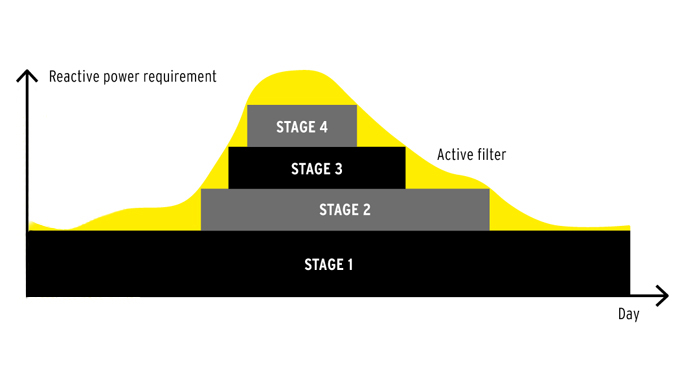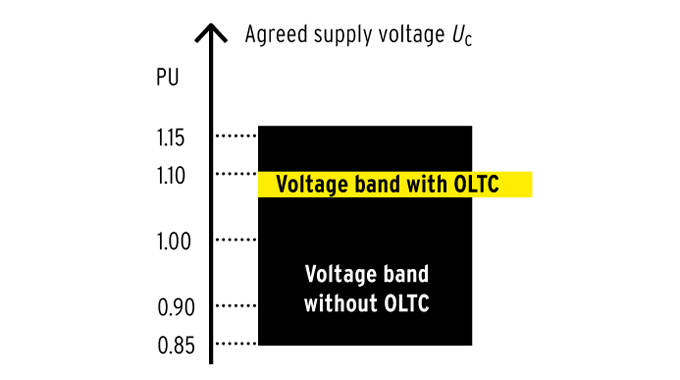Sometimes the sun shines, and sometimes it doesn’t. Sometimes it’s blowing a gale, and other times it’s perfectly calm. Using renewable energies to supply grids poses challenges for plant engineers. But even if supplies are intermittent, an intelligent combination of equipment can keep things on track.
About one-quarter of electricity generated around the world now comes from renewable energy sources. This was the finding of the Global Status Report 2017 from the Renewable Energy Policy Network for the 21st Century, which also calculated that the total output of renewable energy sources in 2016 amounted to more than 2,017 gigawatts (GW) of electricity. That’s over 20 percent of global total energy consumption. And this figure is growing.
In international comparisons, Germany is far ahead in the areas of wind and solar energy, although its market is in a state of flux. Meanwhile, many Asian countries and nations bordering the Persian Gulf and the Sahara are starting to follow its lead. Taiwan and South Korea, for example, have decided to phase out nuclear energy and instead want to expand their wind and solar output. Countries which have previously relied on oil are starting to discover their natural energy sources as well.
After the United Arab Emirates recently announced their intention to invest 163 billion dollars in producing green power, Saudi Arabia began following suit and is now planning to construct new solar energy installations with an output in excess of 10 GW. The kingdom is looking to invest between 30 and 50 billion dollars in the project. On the other side of the Sahara, Morocco is systematically expanding its wind and solar energy landscape and is currently commissioning phase two of Noor—a 350-megawatt solar project. For engineers and operators of wind and solar power stations, this means that things are definitely looking up.
KEEPING THE GRIDS RUNNING SMOOTHLY
Solar and wind energy sources are generally considered clean, but these credentials can only be applied to CO2 emissions and not to the grids that are being supplied by renewables. Fundamentally, it makes no difference whether the electricity from a single wind turbine is fed into a local grid or if a wind or solar plant feeds power into medium, high, or extra-high voltage grids. Multiple instances of feedback effects occur at all levels when renewable energies are fed into the grid.

Keeping things running smoothly requires significant technological and financial investment, and one of the key factors that has to be considered—even at the design stage—is operating the systems within the voltage range of the applicable grid connection point. It is also essential to keep an open mind to all the technical options that are available, as this is the only way to create an overall solution that delivers the very best possible performance, and consistently optimizes the levelized cost of energy (LCOE). Putting together an intelligent combination of equipment is the key to developing an ideal solution for all voltage levels.
ACTIVE AND PASSIVE FILTERS OPTIMIZE COSTS
The supply of energy from wind and solar power stations creates a greater amount of disturbance in public electricity grids. This includes voltage fluctuations, reactive power, harmonics, supraharmonics, and resonance. In some cases, reactive power compensation systems or passive filters alone are not enough to solve this issue, even if they may have been in the past. New ways of thinking are required, particularly in the face of constantly changing grid connection guidelines. The only way for engineers and operators to develop the ideal solution is to combine different options.
Hybrid systems, created by combining active and passive filters, deliver features such as a comprehensive filter effect and reactive power compensation at the grid connection point of wind and solar power installations. The passive filters operate over an extensive range, reaching supraharmonic frequencies. Active filters selectively reduce harmonics in the low-frequency range.
Passive filters combine a capacitor with inductance. They can have a positive impact on line impedance and reduce harmonic components in the grid. In addition, passive filters provide a fixed level of capacitive reactive power and can have a range of dimensions to suit the requirements of each application.
Active filters are based on power electronic IGBT technology and are increasingly being used to reduce grid feedback effects and improve voltage quality, particularly in industrial grids. The supplied compensation current in phase opposition to the disturbance smoothly reduces harmonics and reactive power with high dynamics. In addition, the right systems can provide compensation for asymmetrical loads and flicker. Another important consideration is the ability to extend systems on a modular basis. If new wind turbines are built or the production process and disturbance conditions change, for example, operators can respond quickly to the new situation by installing additional filter modules.
The ideal dimensions of the combined filters and compensation systems are determined by specialists who conduct extensive simulation studies as early as the design stage or measure the voltage quality during operation. This makes it possible to fulfill the applicable standards and successfully achieve the necessary certifications. Another area where the overall design of wind and solar systems can be optimized by combining equipment is the dimensioning of rectifier transformers.
Since the semiconductor modules have a fixed current-carrying capacity, there are limits on the power that can be transmitted at the network node in question. In such cases, dimensioning is primarily dependent on the width of the voltage band in the input range of the AC voltage. This is where the transformer with tap changer comes into play.
KEEPING COSTS DOWN
The transformer with tap changer offers a significantly smaller input voltage range at the AC side of the rectifier transformer. Equipped with an on-load tap-changer, it helps the company that is using it to get the best out of its rectifier transformers. Ohmic losses in the grid are minimized. The narrower voltage band increases the amount of rectifier transformer power that can be trans mitted. Conversely, this means that if control technology is used consistently across all voltage levels, then engineers can reduce the size of all rectifier transformers accordingly. Reducing the LCOE is the name of the game. Combining regulated transformers and rectifier transformers, as well as active and wide-band passive filters, brings engineers of solar and wind power installations one step closer to their main goal: to create systems with maximum financial yield by minimizing investment costs and, at the same time, maximizing system performance—at all voltage levels.
YOUR PERSONAL CONTACT

Do you have any questions about active and passive filters?
Tobias Funk is here to help:
t.funk@reinhausen.com

Do you have any questions about tap changers?
Franco Pizzutto is here to help:
f.pizzutto@reinhausen.com


